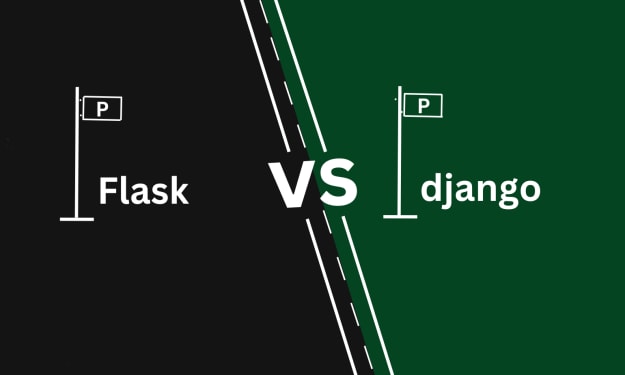Migrating from Traditional Monolith to Spring Boot Microservices Architecture
The migration to a Spring Boot + microservices architecture can drive the success and growth for your organization.

As organizations continue to grow, the need for more efficient and scalable back-end systems has become increasingly important. Traditional monolithic back-end architectures, while once effective, are now facing challenges in terms of scalability, reliability, and agility. To address these challenges, many organizations are turning to modern architectures such as Spring Boot + microservices.
What is Spring boot?
Spring Boot is a popular Java-based framework for building microservices. By breaking down a traditional monolithic architecture into smaller, independent services, organizations can improve scalability, increase reliability and resiliency and enhance agility and flexibility. The result is a more efficient and effective back-end system that can better meet the needs of the business and its customers
In this discussion, we will explore the benefits of migrating from a traditional monolithic back-end architecture to a Spring Boot + microservices architecture. We will also provide an overview of the migration approach, including the key steps and considerations for a successful migration.
Business Benefits
Improved Scalability: One of the key benefits of a Spring boot microservices architecture is the ability to scale individual services independently. It means that organizations can more easily manage and respond to changes in demand without having to scale the entire system.
Increased Reliability and Resiliency: With a Spring boot microservices architecture, the failure of one service does not impact the entire system. It results in improved reliability and resiliency, as well as reduced downtime and better protection against data loss.
Enhanced Agility and Flexibility: By breaking down a traditional monolithic architecture into smaller, independent services, organizations can more easily modify and improve individual services. It results in faster time to market, as well as improved agility and flexibility in responding to changing business needs.
Better Cost Management: With a Spring boot microservices architecture, organizations can more easily manage costs by only scaling the services that require it. It results in improved cost management and cost savings.
Improved Customer Experience: By improving the efficiency and reliability of the back-end system, organizations can deliver a better customer experience. It results in increased customer satisfaction and loyalty.
These business benefits highlight the impact of migrating from a traditional monolithic back-end architecture to a Spring Boot + microservices architecture can have on the success and growth of an organization.
Now, let’s have a look at some of the technical benefits.
Technical Benefits
Independent Deployment and Scaling of Individual Services: With a Spring boot microservices architecture, organizations can deploy and scale individual services independently. It results in improved efficiency and flexibility in managing the back-end system.
Better Maintainability and Easier Development: With a Spring boot microservices architecture, the codebase is broken down into smaller, independent services, making it easier to maintain and develop. This results in improved efficiency and cost savings.
Integration with Modern Technologies and Tools: Spring Boot is a modern framework that supports the latest technologies and tools. By migrating to a Spring Boot + microservices architecture, organizations can more easily integrate with these technologies and tools, resulting in improved efficiency and cost savings.
These technical benefits highlight the advantages of a Spring Boot + microservices architecture in terms of improved performance, efficiency, and integration with modern technologies and tools. By leveraging these benefits, organizations can more effectively manage and grow their back-end systems.
Migration Approach
1. Assess Current Architecture: The first step in migrating from a traditional monolithic back-end architecture to a Spring Boot + microservices architecture is to assess the current architecture. It includes identifying the components and dependencies of the current system, as well as understanding the current performance, scalability, and reliability requirements.
2. Define the Microservices Architecture: Based on the assessment of the current architecture, the next step is to define the desired microservices architecture. It includes identifying the individual services that will make up the new system, as well as defining the communication and data flow between these services.
3. Refactor and Rebuild Services: The next step is to refactor and rebuild the individual services as defined in the microservices architecture. It includes rewriting the code for each service and integrating the services with the desired technologies and tools.
4. Test and Deploy: Once the individual services have been refactored and rebuilt, the next step is to test and deploy the new system. It includes testing the individual services, as well as the communication and data flow between the services.
5. Monitor and Optimize: The final step is to monitor and optimize the new system. It includes monitoring performance, scalability, and reliability, as well as making any necessary optimizations to improve the system over time.
This migration approach provides a high-level overview of the key steps involved in migrating from a traditional monolithic back-end architecture to a Spring Boot + microservices architecture. By following this approach, organizations can successfully migrate their back-end systems and realize the business and technical benefits of a microservices architecture.
Conclusion
In conclusion, the migration to a Spring Boot + microservices architecture is a strategic investment that can drive the success and growth of an organization. By leveraging the benefits of this architecture, organizations can more effectively manage and grow their back-end systems while also delivering a better customer experience.
If you are looking to hire Spring boot developer, skilled and experienced in offering best-in-class migration services, get in touch with Bacancy. They have a pool of talented Java Spring boot developers with the skillset and expertise you need for the project. Get in touch with them and start your migration project with confidence.
About the Creator
Vinod Vasava
Tech Expert, Content Writer for AI, ML, Springboot, Django, Python and Java






Comments
There are no comments for this story
Be the first to respond and start the conversation.